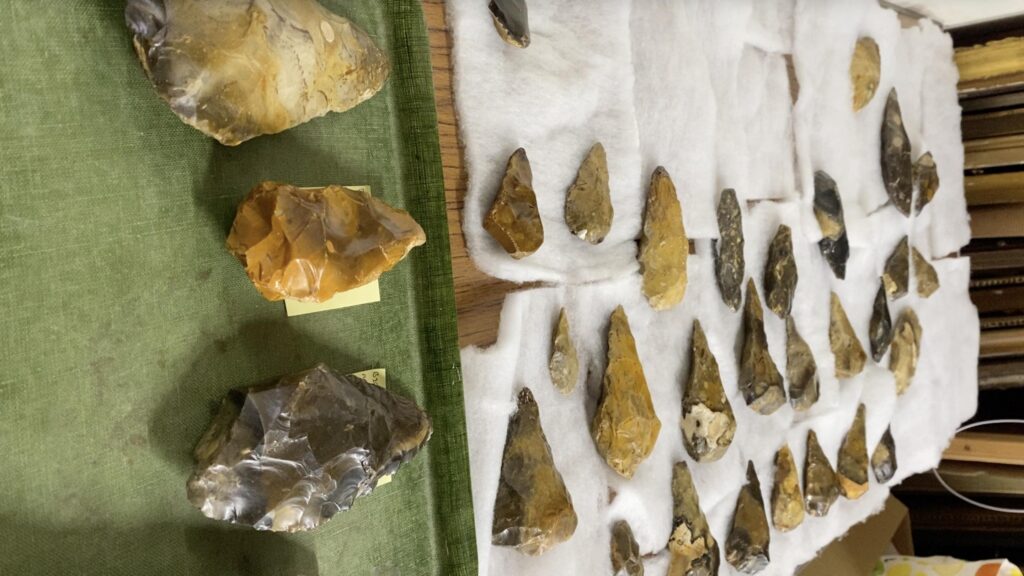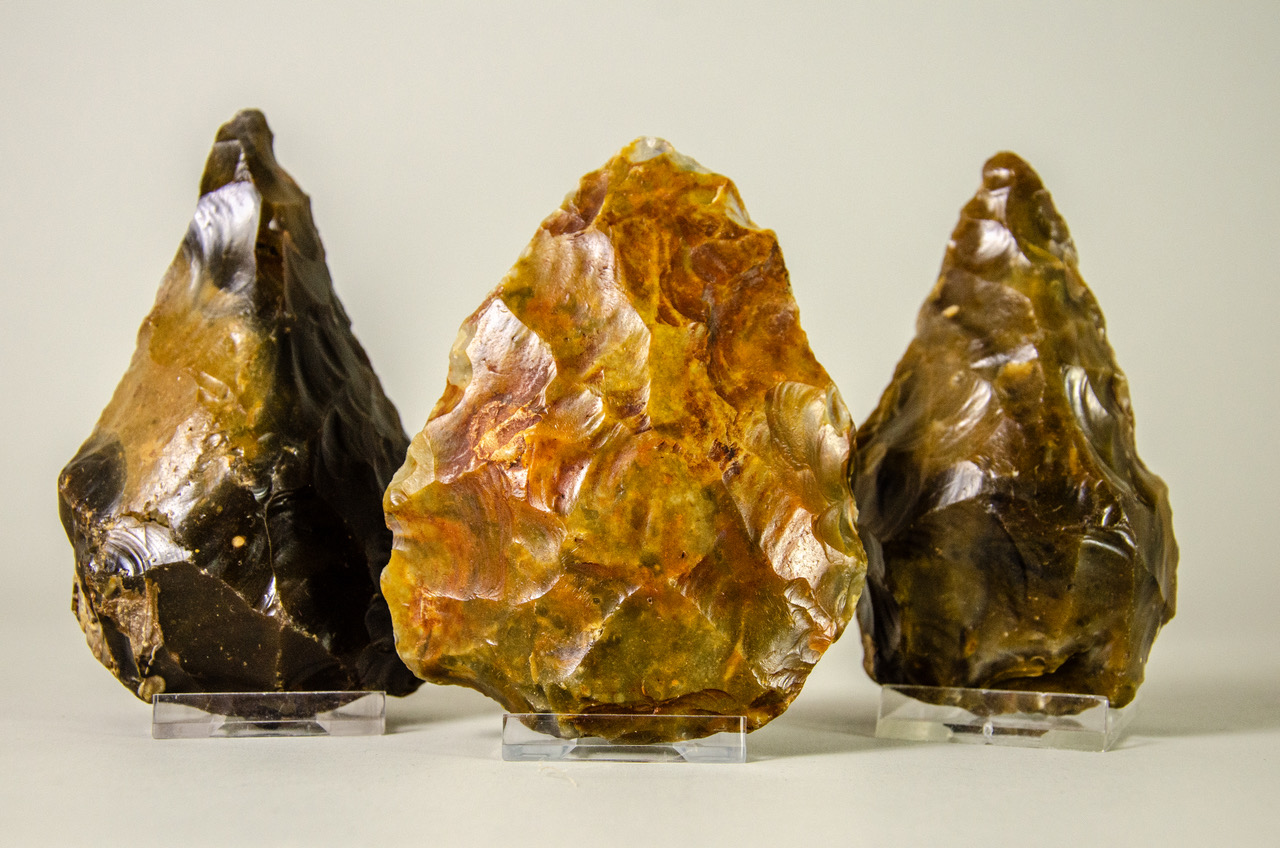The biggest private collection of rare Stone Age flint tools made by a cousin species of humans is set to sell for £10,000.
The prehistoric treasures are over 400,000 years old and were discovered by history buff David Blake in an old gravel pit.
Most are lower palaeolithic flint handaxes but there are also mesolithic and neolithic items in the collection of 68.
READ MORE: Care home resident reveals she played key role in mega success of James Bond films
- Advertisement -
The handaxes have often been referred to as the Swiss Army knife of the Palaeolithic.
They likely had multiple uses, which may have included butchering, digging, and working wood, hide, and furs.
Carpenter Mr Blake who died 10 years ago found them on the foreshore between Herne Bay and Reculver, Kent between 1987 and 2013.
They are thought to have been made by Homo heidelbergensis – the most likely human species in Britain at the time they were made, as reported by What’s The Jam.

Mr Blake’s daughter Sharron Blake-Allan, said he had an amazingly sharp eye.
- Advertisement -
“He’d be out in all weathers, sorting through flint falls.
“He found everything from axes to arrowheads to coins and sharks’ teeth, too,” she said
The haul is described as “an exciting opportunity for any collector who wants an exceptional example of early man’s history”
- Advertisement -
The Reculver site is one of the most important in Britain as it was one of the first where palaeolithic tools were first recognised in 1860.
Since then, many hundreds of hand axes have been found, but they rarely come up for auction.
It is an area of ongoing active research into early expressions of human
culture, which are reflected in the handaxe shapes.
An excavation revealed that the sands and gravels being exposed in the cliff face from which the palaeolithic tools were found were laid down by an ancient course of the River Stour in a warm interglacial period lasting up to 10,000 years, probably around 410,000 years ago.
Since this time, there have been at least three other similar warm periods, separated by cold ice ages.
During these warm periods, Britain experienced occupation phases by different human species, including Neanderthals and ultimately Homo sapiens, each using distinct stone tool technologies.
Each would have taken some 20 minutes to knapp into the desired functional shape, which required complex thought.
The ancient humans had brains approaching similar sizes to modern humans and may have even been capable of abstract thought, which could have been represented in handaxe form.
All of the tools balance the functional solidity of stone with delicate scalloping around the cutting edges, revealing the gleaming translucent colours of the flints: shades of greys, ginger and browns.
In 2000, whilst looking for handaxes on the beach near Reculver, Mr Blake met John Wymer, one of the country’s leading palaeolithic archaeologists.
Mr Wymer recorded in his notebook that the likely reason he hadn’t found any handaxes in the last decade was probably due to David’s collecting.
Mr Blake’s enthusiasm passed to his daughter, who became a history teacher.
But not his wife who Sharron recently realised had been using one of the
larger axe heads to prop open her garden gate before it was rescued.
The tools vary in estimate between £200 and £1,000.
The full collection is being auctioned by Canterbury Auction Galleries online on August 1st and 2nd.
READ MORE: Paddleboarder treats divers to pint after finding lost wedding ring in river


















